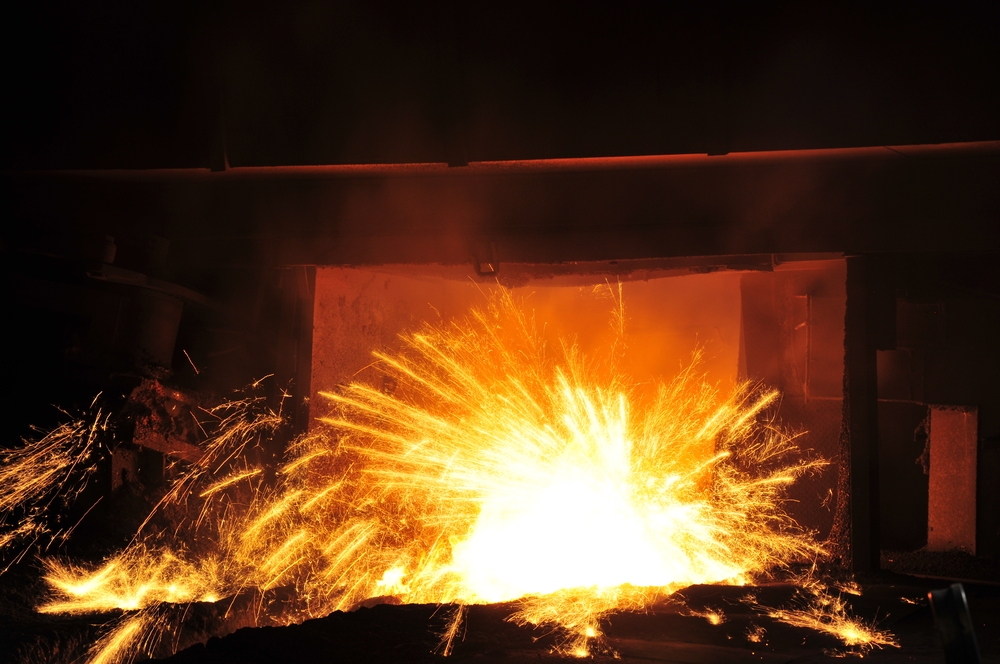The Other Steeltown…in China

Please note that we are not authorised to provide any investment advice. The content on this page is for information purposes only.
China’s steelmaking capacity has expanded rapidly since the beginning of the 21st century. The scale of this expansion is unprecedented in the history of industrialisation in Europe, North America and East Asia.
China’s annual production of crude steel reached 804 million tonnes in 2015, 6.3 times higher than the total production in 2000. It accounts for nearly 50 percent of total global steel output, a jump from only 15 percent at the end of the previous century.
China’s steelmaking capacity has expanded rapidly since the beginning of the 21st century. The scale of this expansion is unprecedented in the history of industrialisation in Europe, North America and East Asia.
China’s annual production of crude steel reached 804 million tonnes in 2015, 6.3 times higher than the total production in 2000. It accounts for nearly 50 percent of total global steel output, a jump from only 15 percent at the end of the previous century.
However, since the onset of the global financial crisis in 2008 China’s annual economic growth rate has progressively slowed. In addition, the steel industry — which is prone to cyclical changes alongside other industries — has become trapped in a cycle of excess capacity.
In 2014–15, the price of steel products continuously hit new lows, adding enormous pressure to domestic industrial restructuring. Dozens of enterprises have stopped operating or will be forced into bankruptcy. There is urgent need for restructuring and reform in the industry.
In recent years, the Chinese government has mainly focused its restructuring efforts on reducing the quantity of steel production and increasing the industry’s overall technical standards. However, these reform measures have not helped the steel industry to exit a difficult period. Instead, the overriding structural problems in the industry have deepened.
So what has gone wrong?
The difficulties in the steelmaking industry begin and end with Chinese state-owned enterprises (SOEs). At present, numerous SOEs within the steel industry are not responding to market signals and, thus, not exiting the industry. This is largely due to their ongoing and generous government subsidies, which mean that they can operate into the long term while making continuous losses.
Private enterprises, on the other hand, do not enjoy this kind of external support. They usually suspend production when their losses reach a certain level because they cannot sustain them. For example, when steel market product prices declined in late 2015, about 30 private steel enterprises in northern China closed shop.
These conditions have led to many SOEs becoming ‘zombie enterprises’ — firms that are reliant on external support for survival. Such enterprises have operational indicators that include long-term losses, no hope of stopping those losses and insolvency.
This is the basic situation confronting the steel industry. The solution is clear: inefficient enterprises must exit the market.
At the end of 2015, China’s central government proposed and started implementing a series of ‘supply-side reforms’. This represents an important shift in policy focus towards dealing with the underlying structural challenges facing the economy, rather than the previously popular demand expansion policy.
In January 2016, the State Council promulgated the ‘Advice on addressing excessive capacity and relieving hardship for the steel industry’, which specifically proposed that steelmaking capacity in China should be reduced by 100–150 million tonnes in the next five years.
It is clear that the Chinese steel industry has no choice but to further restructure and address this ‘zombie companies’ issue. Many firms will need to exit the industry permanently and others will likely be privatised through merger and acquisition or by selling assets to private enterprises. Ultimately, it will take much deeper reform — supported by public policy such as relocating and retraining displaced workers — to get the steel industry back on track and moving towards a more sustainable future.
However, the story is not entirely bleak. Other more favourable factors will hopefully enable the reform targets to be achieved sooner rather than later.
First, there exist superior SOE and state-owned bank ‘group companies’ within local governments. These have been suffering from the endless transfers of finances to ‘zombie enterprises’ and are therefore eager for a change to the status quo.
Second, zombie enterprises that have accrued heavy debts or have become insolvent may not survive long without external support, and therefore may have no choice but to finally exit the market.
Third, the central government has already put aside tens of billions of renminbi in funds to address the unemployment problems that will result from zombie enterprises exiting the steel market.
In the medium term, with much reform and restructuring within and between domestic regional markets, the outlook for the industry is a positive one.
Production is expected to recover to a more normal level of profitability and the market structure will become a more monopolistically competitive one. Such competition will help to curb the present price war, deepen product division, and improve the quality and profitability of the steel industry as a whole.
Helping the Chinese steel industry to exit its ‘winter’ is not simply a matter of adjusting the supply and demand imbalance, but also requires solving the problem of market failure (or, to a great extent, ‘government failure’) by ensuring that SOEs become truly competitive in the steel market. This transition will take time and will depend on how fast the general package of market-oriented reforms can shift the broader economy.
Reconstructing China’s steel industry is republished with permission from East Asia Forum




